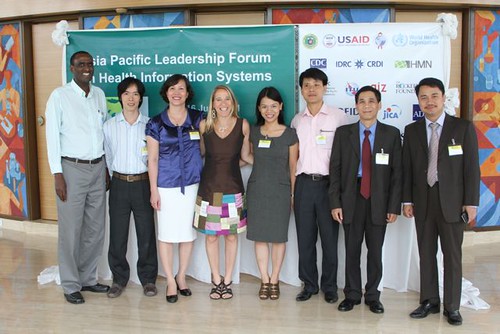
(Amy with Vietnam Delegation in Manila)
As a follow-up to our workshop in Hoi An, which focused predominantly on the technical side of Health Information Systems (HIS) (i.e., standards, enterprise architecture and systems design), I just returned from a week long HIS Leadership Forum in Manila. Even though technology plays a key role in strengthening HIS, the greater challenge is to establish political will, institutional capacity, and a supportive policy/regulatory environment.
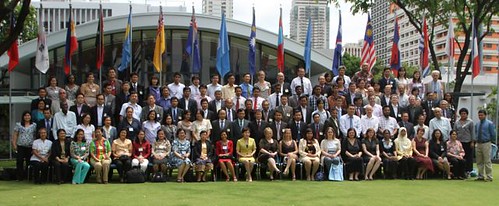
(HIS Leadership Forum in Manila)
In order to accomplish this feat, nine country delegations representing persons from multiple sectors (i.e., Ministry of Health, Ministry of Planning, Ministry of Finance, Ministry of Interior, Ministry of Telecommunications, etc.) attended the HIS Leadership Forum in order to gain a heightened awareness of the roles various sectors play in HIS, and to develop strategies and action plans for improving cross-sector collaboration and coordination.
The majority of the workshop was spent breaking down the seven components of Health Information Systems: Governance & Multisectoral Engagement, Strategic Planning/Finance; Policy & Regulatory Environment; Information Use; Infrastructure; Human Capital Development; and System & Data Interoperability.
As a facilitator, I took on the Cambodia team and walked them through a series of activities to help them identify strengths and weaknesses of each component; to begin to draft an action plan on concrete ways to move this process forward; to identify resources needed; and to explore potential south-to-south collaboration (where countries learn from one another).
I’m glad I opted not to facilitate the Vietnam delegation – only because I’m too close to the fire, so to speak. It was fabulous to have a neutral person telling the Ministry virtually the same things that I’ve been saying all along; only hearing it from someone else gives it more credibility!
The HIS Forum also afforded an opportunity for donors to convene to collectively develop an effective operational plan for donor/partner coordination. In a climate of diminishing resources, it’s imperative that we leverage resources and all work towards a common vision. Otherwise, donors – although well intentioned – are perpetuating the problem of fragmented, vertical reporting systems.
Just so I don’t talk shop too long, I’ll shift gears and focus on other aspects of this trip.
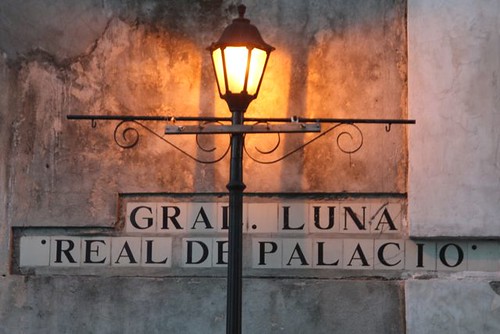
(Intramuros – old part of Manila)
First, I have to say, the Filipinos were the friendliest people that I have ever encountered. Everywhere I went I was met with friendly smiles, inquisitive minds, and good nature. People were genuinely kind and helpful…plus, it was rather refreshing to see that most people spoke English.
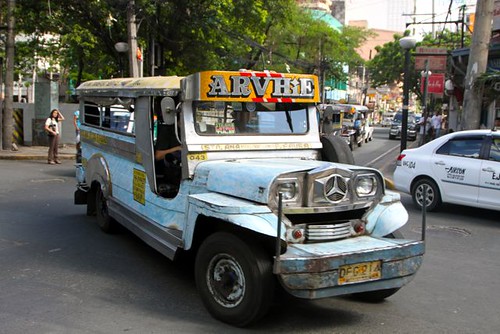
(Jeepneys – my favorite aspect of Manila)
However, being in Manila also felt as if I had transported myself back to the states – at least in terms of shopping! From the Hyatt Hotel, I could walk to Robinson’s Mall in five minutes flat. As I approached the entrance, I was quickly inundated with iconic franchises and logos: Starbucks, Krispy Kreme, Pizza Hut, McDonalds, Burger King, Wendy’s, KFC, Dunkin Donuts, Cinnabon, GAP, BENETTON, TGI FRIDAYS, The Body Shop, etc!
In a kitschy way, I relished in the absurdity of it all…spending endless hours walking up and down the mall, four floors of shopping plus two annexes and the cinema!
The mall culture in Manila seems different than it does in the states. First, the malls are packed – it’s THE thing to do – especially given the heat and the traffic. Yet, the similarities are equally uncanny. As I watched teenagers huddled together in the booths of TGI Fridays, mothers having to say ‘no’ to their children who so desperately wanted to buy candy, and young sales clerks talking and texting on their iPhones in between sales, I relished in the universal nature of our societies.
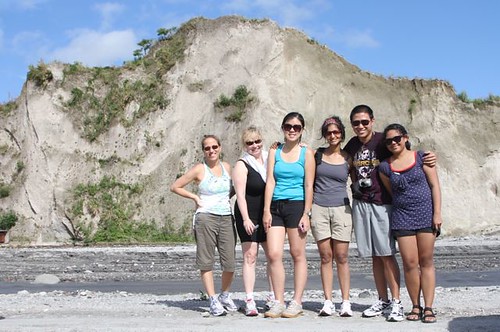
(Crew that climbed Mount Pinatubo)
Alas, I tried to limit my time at the mall. So on our one free day, we arranged a trip to climb Mount Pinatubo on its 20-year anniversary of its eruption. We departed at 3:30 am and didn’t return until 9pm! Yet, the entire experience was extraordinary!
Mount Pinatubo sits approximately 90 kilometers northwest of Manila. In June of 1991, when the volcano erupted, 800 people were killed (some say 70% of the indigenous Aeta people living near Mount Pinatubo) and 100,000 became homeless.
The eruption lasted for nine hours, sending millions of tons of sulfur dioxide into the atmosphere – resulting in a decrease in temperature worldwide over the next few years. To put this into perspective, the eruption plume of Mount Pintaubo’s various gases and ash reached high into the atmosphere – within two hours the plume reached 21 miles high and over 250 miles wide – ten times larger than Mount St. Helens in 1980.
Yet, out of nature’s fury begets new life and beauty. A gorgeous crater lake formed in the 1991 caldera, with lava domes forming an island. I was transfixed by the thought of how this desolate landscape had been transformed by the virulent volcanic eruption into a stunning vista.
The grueling trip included hours of 4×4 – in which our driver skillfully traversed the landscape of thick lahars, muddy terrain, shallow streams and large boulders; followed by a three hour hike (one way) predominantly upstream – literally in the water!
But that first glimpse of emerald water surrounded by walls of volcanic cliffs was breathtaking!
On our way to Mount Pinatubo, we took a minor detour to pay tribute to the American and Filipino soldiers of General Douglas MacArthur’s who died during the Bataan Death March to Camp O’Donnell. For more information: (http://www.army.mil/asianpacificsoldiers/history/bataan.html_).
While staring up at the monument to the WWII veterans, it made me think of my own grandfather, Maurice Gottlieb, who was stationed in the Guadalcanal. In high school, I interviewed my grandfather regarding his adventures in WWII and wrote the following report – dated May 9, 1986 (and for my SME friends, this was for Mr. Wilson’s class).
I wrote this report over 25 years ago! I wanted to make sure that it didn’t get lost, and that my Grandfather’s personal history would live on with others. The following is more for my family – as a reminder of the courage, love, and bravery of our beloved Maurice Gottlieb! I miss him dearly.
“The Gottlieb family gathered to celebrate January 1st, 1941, the onset of the New Year. Jazz by Artie Shaw drifted over the radio, and the family spent a carefree afternoon together never realizing how ominous the world situation would become by the end of the year and how this would affect a member of their family.
Since all men serve their country, it wasn’t unusual for my grandfather, a then twenty year old, to enroll as a Reserve Officer in 1939. Active in the Reserves through 1941, Grandpa found himself at Fort Leonard Wood, Missouri, and was assigned to a Quarter-master Company, which provided the logistics of getting supplies to various parts of the army. His personal notes reflect that “weather was rainy, much mud, but morale was good.”
By December of 1941 Grandpa was assigned to salvage operations which he continued throughout the war; and in the first week of December he took a much needed furlough and went to visit his sister in Tulsa, Oklahoma. It was there, in Tulsa, on December 7, 1941, that he heard over the radio that the Japanese had bombed Pearl Harbor. All leaves were cancelled; everyone was to report back to headquarters for duty. America was at war!
On December 29, 1941, orders came by courier at 2AM at Fort Leonard Wood saying that men were to pack up and move to the Pacific Coast. No destination was given at that time; and Grandpa and his troops were up for 36 hours packing equipment and loading in onto a train. Cramped aboard, they had to wait another 24 hours before the train departed and they still did not know their destination.
Finally, the destination was given as San Francisco’s Cow Palace, which was no more than a big arena containing horse stalls, which now served as living quarters for the army and held four men sleeping per stall.
Sailing orders to the Pacific were delayed because of the confusion of the war, and for six months the Cow Palace was where there was “fatigue, work and drills….and morale was low with restricted passes and laws.”
Orders finally came. On June 16, 1942, Grandpa and his troops finally left the American mainland and arrived in Honolulu, which was in the then Territory of Hawaii.
For the next year the frenzy of the war didn’t reach Grandpa, who recalled the year in Hawaii as “mellow”. He spent this year running a salvage yard to collect metals in destroyed vehicles and filed a report noting the following accomplished results:
“Shipped over 800 tons of scrap metals to continental US. Checked and inspected 1600 tents. Packed thousands of pairs of salvaged shoes for return to the continental US. Segregated and baled over 100 tons of salvaged clothing for sale. Units established and skill developed in shoe repair, canvas and cot repair. Developed and maintained an orderly and well-run salvage yard from two littered yards.”
But the Hawaiian period came to an end with notice on May 3, 1943, that Grandpa’s unit was alerted for movement toward the combat zone in the Pacific.
By June 2, 1942, Grandpa had arrived at Pago Pago, American Samoa, where sightseeing and road marches were commonplace because of the two week delay on the island due to combat alerts and bombings of the convoy.
Shore leave was given on June 17, 1943 to visit Epiritu Santu, New Hebrides; And July 6, 1943, saw the final destination of Guadalcanal, Solomen Islands.
From Hawaii to Guadalcanal was a 45 day trip. The kitchen facilities were not sufficient to feed the troops so only two meals per day were served. Knowing this, Grandpa went ashore in Samoa and purchased $600 worth of candy which he rationed daily to augment the ship’s meal!
During the last three days of the trip to Guadalcanal, the ship passed through a narrow passage called, “The Slot”, which was heavily guarded by the Japanese navy. All aboard the ship were required to awake before dawn each day and be on the lookout for submarines.
The Battle of Guadalcanal began on August 7, 1942, under Major General Alexander Vandergrift. The fighting was bitter. It wasn’t until February 1943, that army troops under General Alexander finally cleared Guadalcanal. About 5,000 Americans were killed during this time, and it was estimated that the Japanese had five times that many casualties.
All the fierce fighting was between August 7, 1942 and February 1943. When Grandpa landed on July 6, 1943, he came at a relatively safer time period and didn’t see any war maneuvers until ten days later when he recorded, “July 16 & 17, 1943 – First time unit under fire. Air raids with accompanying bombing and anti-aircraft fire. Morale: Excellent.”
Grandpa had no actual contact with the Japanese troops because he was in charge of supplies. He did, however, recall nightly bombings from planes and naval artillery. The air raid shelters were made from palm trees and dirt holes. Grandpa still remembers the discomfort and anxiety of sitting half the night while praying in the dirt holes. “There are no atheists in the fox holes” was a common saying.
Grandpa recalled that once during the nightly shellings a men went berserk and killed another man with a rifle. Caught soon after the slaying, the insane soldier was tried and returned to the States where he served time in the Penitentiary.
By mid 1944 the bombings subsided, and Grandpa was transferred into the Transportation Corps which was in charge of Beach Operations and was responsible for supervising the loading and unloading of ships. The lessened bombings still didn’t quench the sense of danger which was always present. Grandpa recalled how a US ammunition ship, anchored in the harbor, was hit by a torpedo and blown up. A 500 pound boiler from the ship was thrown with such a force from the explosion tht it landed over a half a mile away at the foot of Grandpa’s cot.
There were no survivors! Neither the ship’s crew or the loading detachment; over 300 men were estimated to be lost. And for the next five days, Grandpa and his outfit were patrolling the beach, collecting pieces of bodies. This particular tragedy really affected Grandpa and evokes a vivid memory even to this day.
The year of 1945 saw and end to the war. Grandpa stated that the last ten months of Pacific duty seemed relatively quiet and uneventful. During this time there came notice that a shipment of eggs had arrived in camp from New Zealand. Grandpa ran to this shipment site and devoured 26 eggs, even though he had already eaten breakfast.
Finally in August of 1945, Granpda got order to return to the states and departed in a navy ship which, 300 yards out of harbor, began reversing. Grandpa panicked and thought his orders were withdrawn, only to discover that the Captain had forgotten to raise the anchor. Thus ended Grandpa’s Pacific adventures in World War II.”

(Memorial at Death March)
My heart goes out to all the young soldiers who are still at war…

(David in his first triathlon)
Finally, I am flying back to Austin for the 4th of July! Unfortunately, I won’t have an opportunity to visit my friends and family in KC, St. Louis or Atlanta – but would love to see you in Austin!
Much love to all…
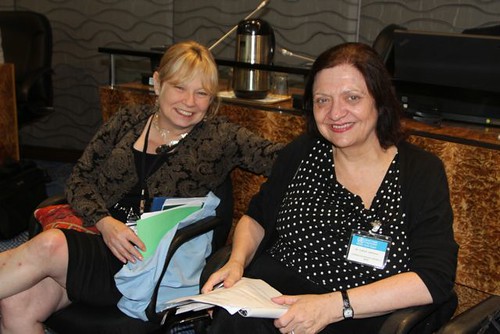
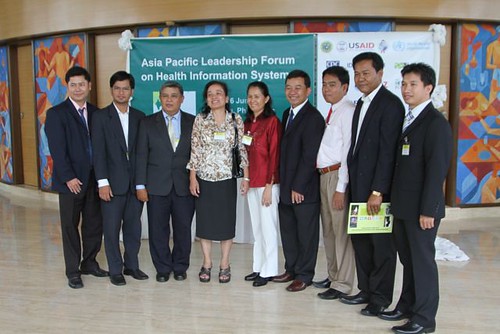
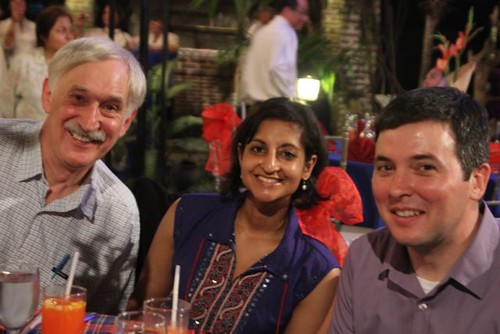
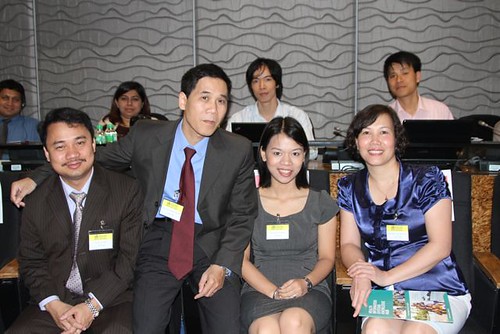
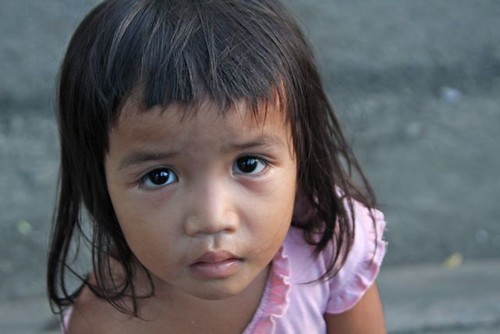

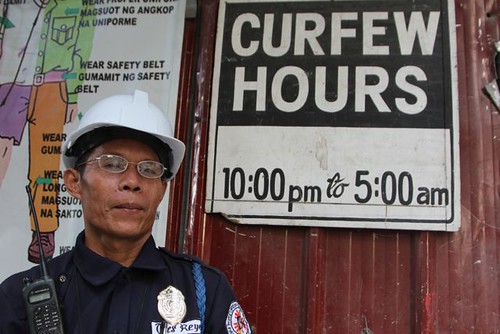
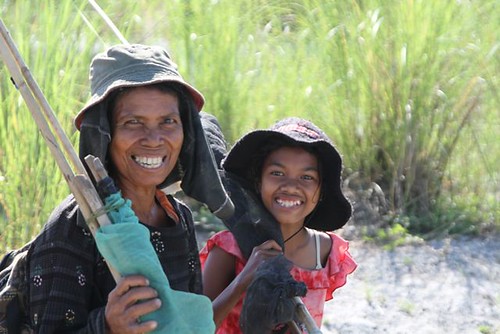
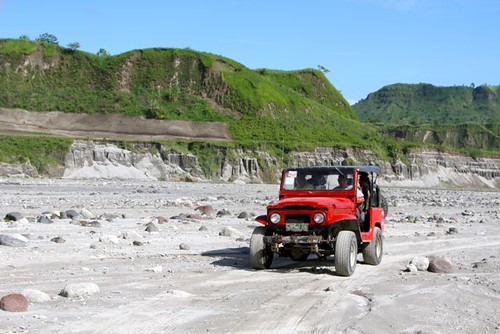

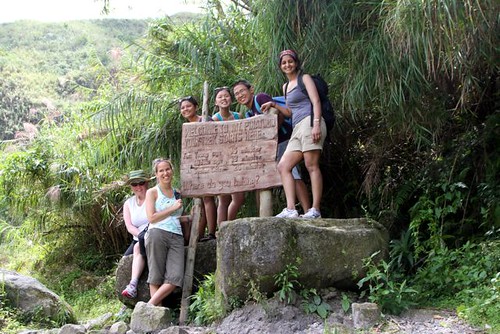
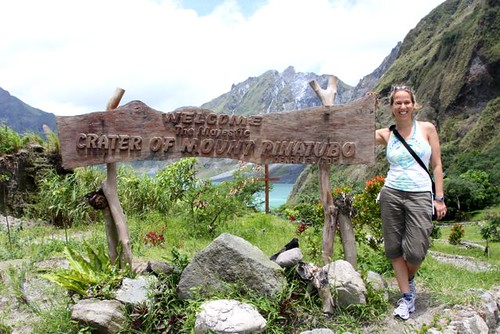


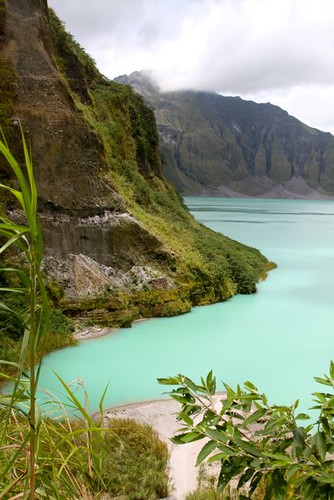
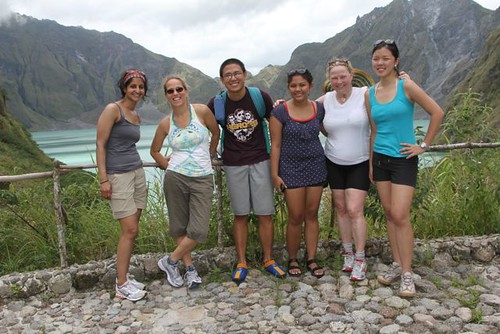


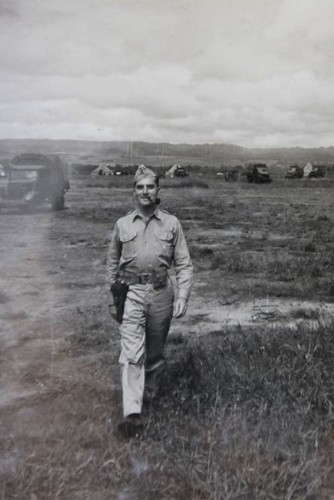

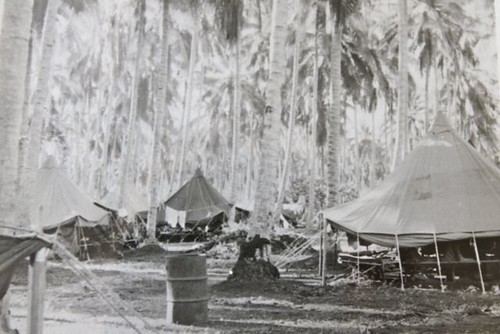
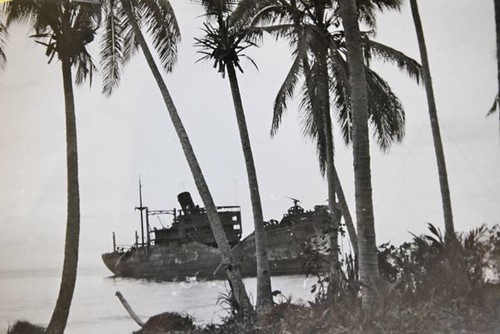
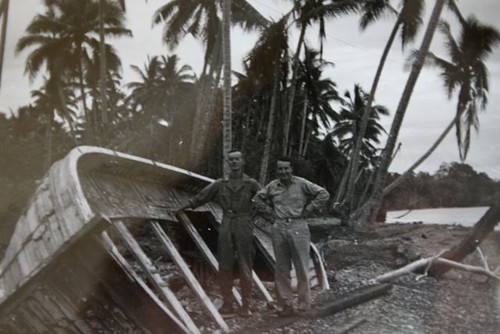
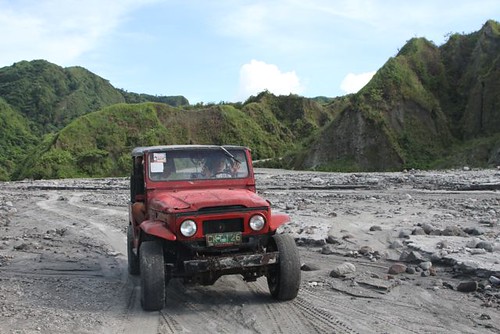
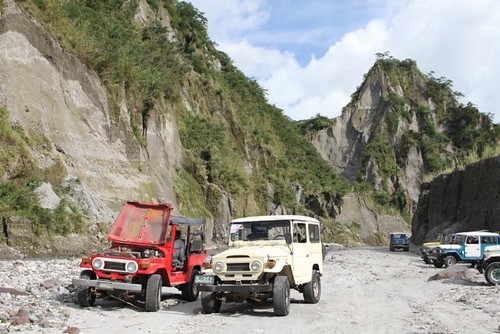

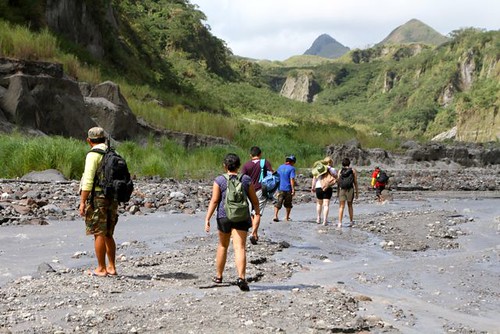
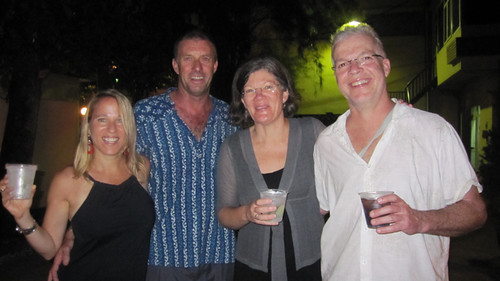
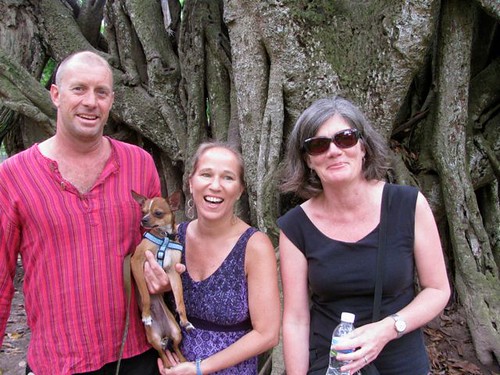
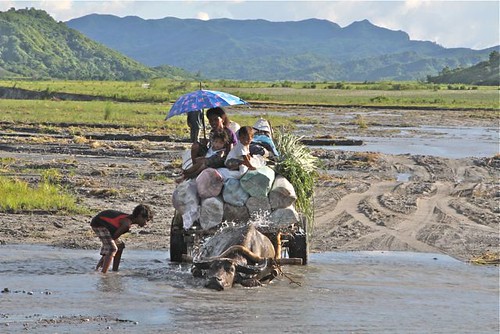
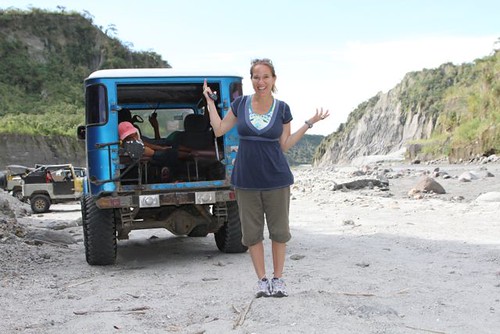

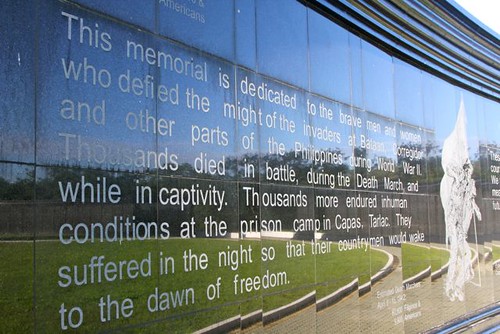
Amy, so glad you interviewed Gramp and then shared this with us!
Amazingly, gramps never talked about WWII and I am sure he was typical of the men of that era.
They were an amazing generation, called upon to do heroic work under miserable circumstances!
Hats off to them and grandpa and you for sharing!